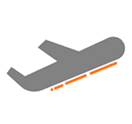
DO-297 Introduction – Integrated Modular Avionics
Read Excerpt Below, or Click Here To Download Full 10-20 Page Paper
This DO-297 Whitepaper on Integrated Modular Avionics (IMA). Provides basic avionics IMA facts and IMA certification aspects per DO-178C. Further, since IMA is the future of many systems as they move on from traditional federated (standalone) avionics, whitepaper also provides information to help build successful DO297 IMA avionics.
DO-297’s title readily misleads new avionics engineers: “Integrated Modular Avionics (IMA) Development Guidance and Certification Considerations”. Perhaps, DO-297 has misled you too. Here is a quick quiz to determine if you have some basic IMA knowledge:
- T / F: Most of today’s avionics are “integrated” and “modular”.
- T / F: DO-297 mostly invokes processes similar to DO-17.
- T / F: For IMA components, DO-297 replaces DO-178C and DO-254.
- T / F: Partitioning and Health Monitoring are fundamental to
DO-297. - T / F: IMA systems require their own unique safety assessment
processes and results - T / F: IMA activities must consider the software, hardware, system
and aircraft as part of an interoperable whole ecosystem
If you are confident you know all the above answers and can explain your rationale, then some of the information in this whitepaper will be easy for you. Otherwise, this whitepaper will hopefully explain the answers plus many more.
First, aren’t all avionics systems “integrated”? Well, yes to some degree; many avionics systems in fact use outputs from other systems while sending their own outputs to yet other systems. But does this simple I/O constitute true integration? Consider a basic can-opener: it can probably open most types of cans and operates in different environments with different users, all while maintaining the ability to open cans. Yet it is neither “integrated” or “modular”: the can-opener has no affiliation with a particular can and is not provided in modules or pieces. In fact a can-opener is a standalone “system” which can be manual or electric. In avionics, we call such standalone systems “federated” and federated systems comprise traditional avionics most commonly in use today.
Free: Download Remaining 10+ Page Paper Here



